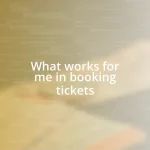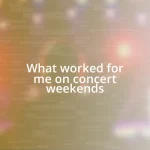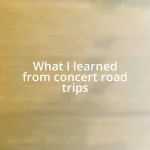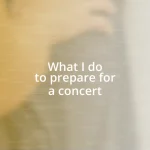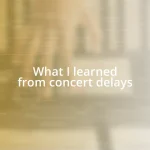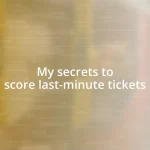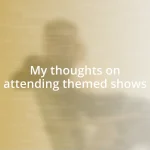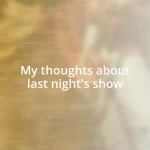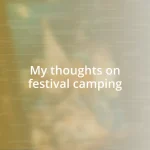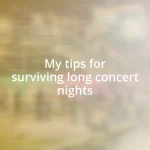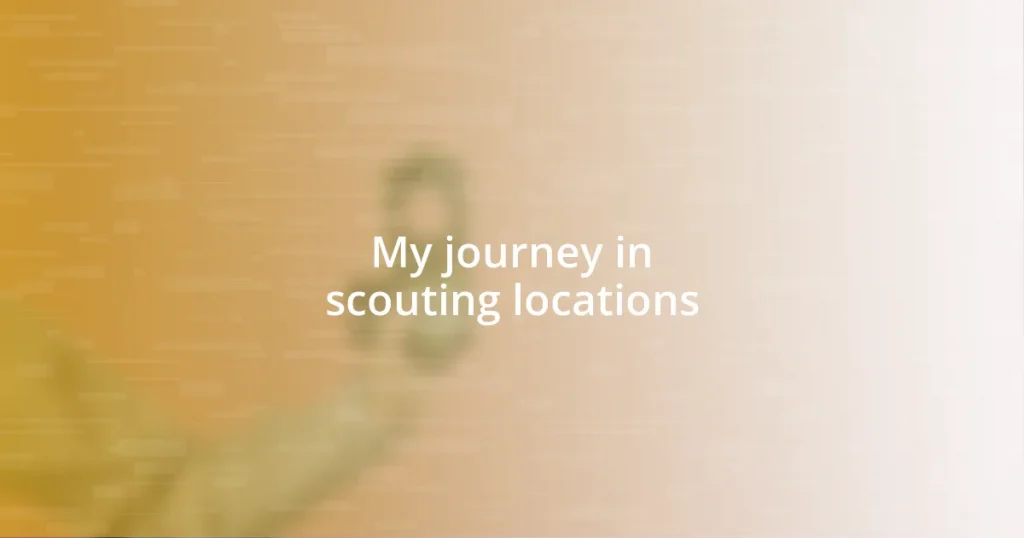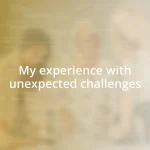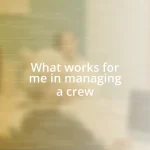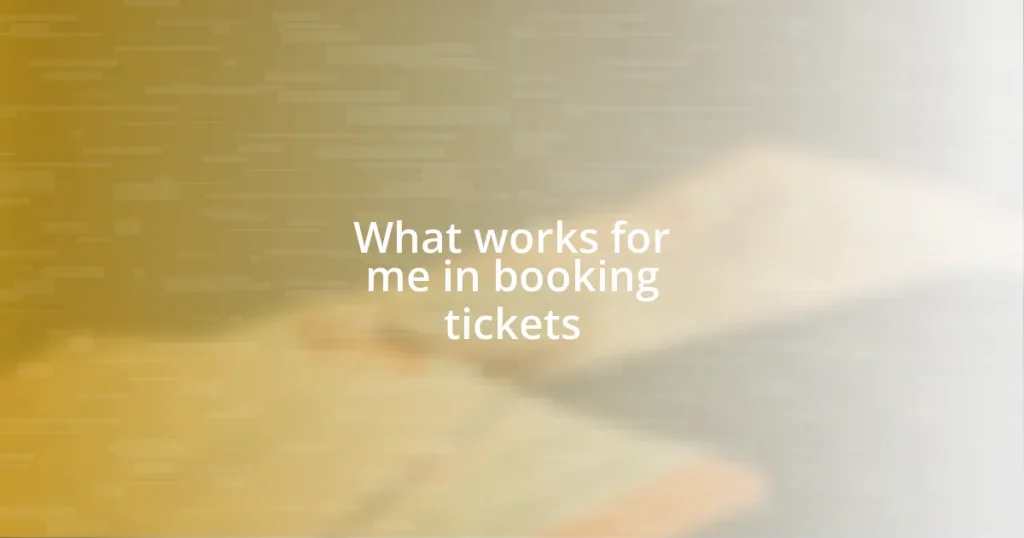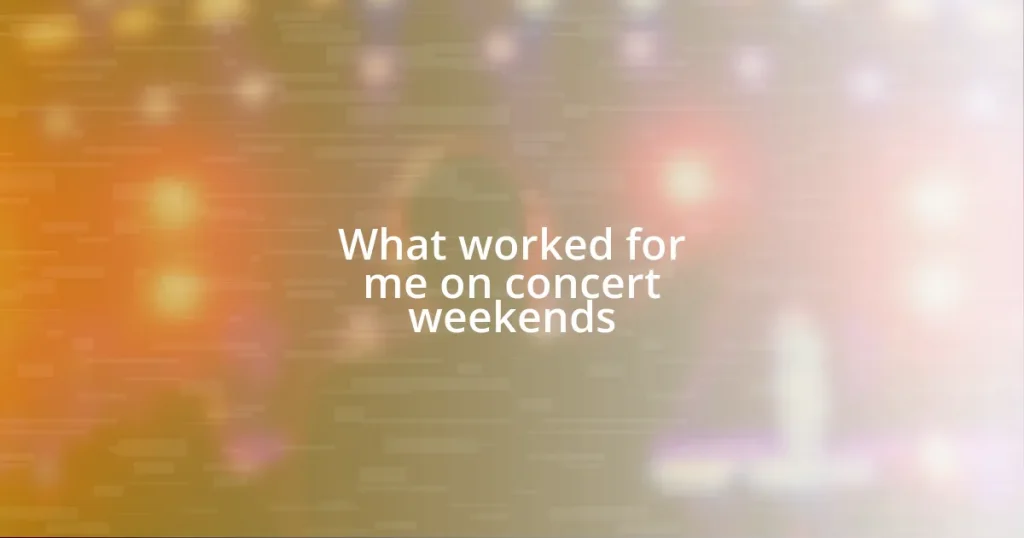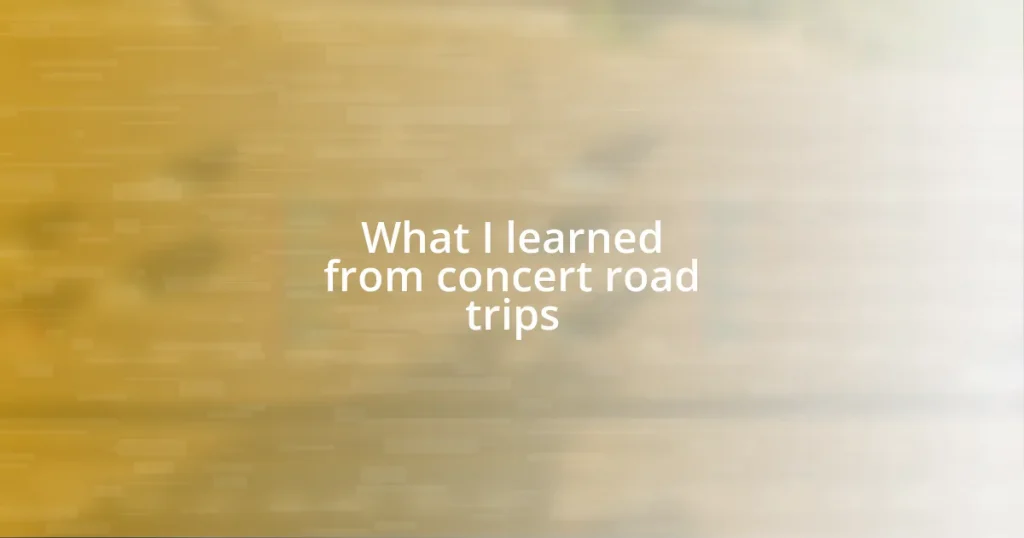Key takeaways:
- Scouting locations is crucial for project success, balancing aesthetics with practical considerations like accessibility and safety.
- Developing a connection with the environment enhances creativity and the emotional impact of a project.
- Utilizing a mix of digital tools and old-fashioned methods (like sketching) helps in effective documentation and idea generation.
- Trusting instincts and being adaptable to surroundings can lead to unexpected discoveries and enrich the overall narrative of a project.
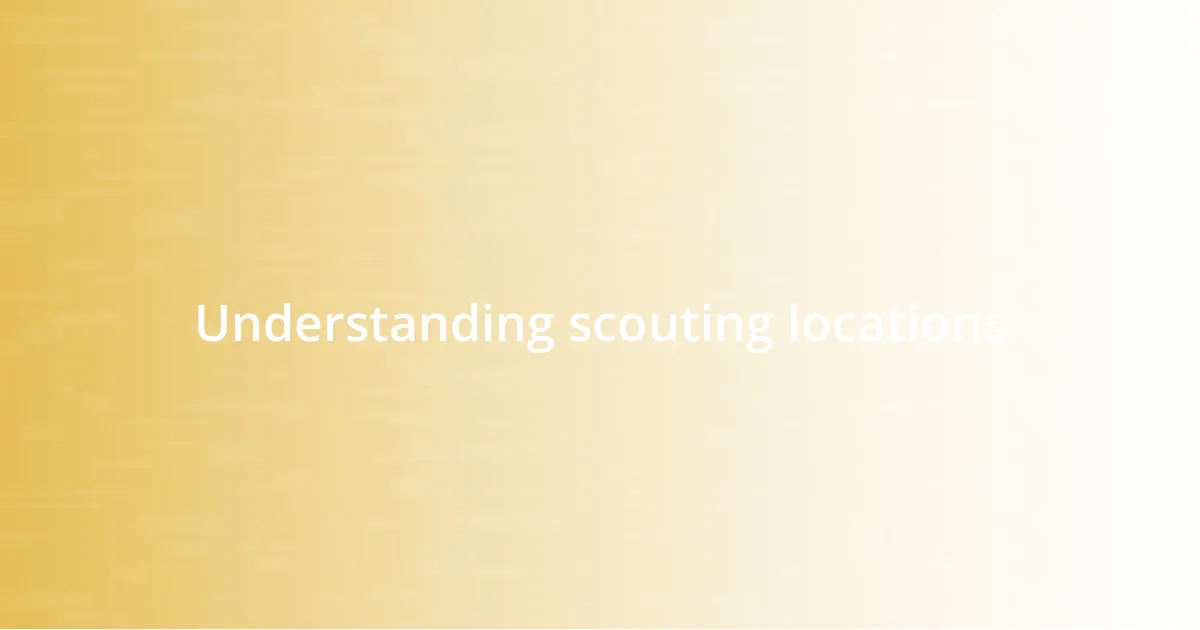
Understanding scouting locations
Understanding scouting locations requires a keen eye for detail and a deep appreciation for the environment. I remember my first outing, standing atop a ridge and feeling the rush of excitement as I surveyed the landscape below. The combination of topography, vegetation, and man-made structures all played a crucial role in determining the ideal spot for a project. Isn’t it fascinating how these elements intertwine to create perfect scouting conditions?
When evaluating a location, I often ask myself about accessibility and safety. During one memorable scouting expedition, we chose a beautiful but remote area that turned out to be challenging to access. It taught me a valuable lesson about balancing an aesthetically pleasing site against practical considerations. I realized that the journey to a location can sometimes overshadow the experience itself.
Moreover, understanding the local wildlife and their habits can greatly influence my choice of a scouting location. I once stumbled upon a serene forest just before sundown, where the subtle sounds of rustling leaves turned into an orchestra of nature. Observing deer grazing nearby reminded me of the importance of respecting wildlife patterns—wouldn’t you agree that finding harmony between our activities and nature can lead to unforgettable experiences? That’s what true scouting is all about.
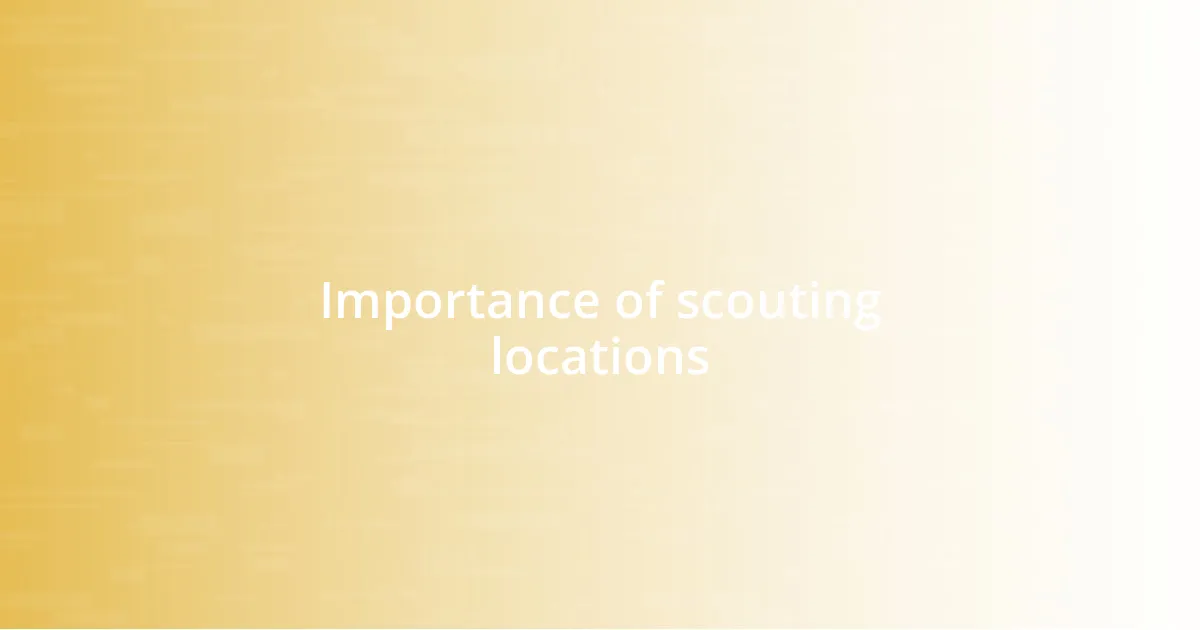
Importance of scouting locations
Understanding the importance of scouting locations is crucial for success in any project. I recall a time when I meticulously scouted a particular valley for a photography project. The way the golden hour light danced across the landscape was breathtaking, and it gave me a creative boost I’d never anticipated. It made me realize that the right location could transform a good project into something truly memorable.
Additionally, scouting locations helps us anticipate challenges that might arise. On one occasion, while exploring a potential site for a camping trip, I came across natural barriers that could have made our adventure significantly more difficult. This experience taught me to consider not just the beauty of a location but also its practicality, guiding me to scout thoroughly before making any commitments.
Finally, developing a sense of place and connection with a location enriches our experiences. I remember standing by a picturesque lake, feeling the cool breeze and listening to the gentle ripples on the water. It was in that moment I understood that the emotional connection we forge with our surroundings can enhance the overall atmosphere of any project or endeavor. Isn’t it interesting how the right location can evoke such strong feelings?
| Key Factor | Impact of Scouting Locations |
|---|---|
| Accessibility | Ensures ease of reach and the feasibility of the project. |
| Safety | Reduces risks associated with treacherous terrains or wildlife. |
| Aesthetics | Influences the overall appeal and uniqueness of the project. |
| Emotional Connection | Enhances the experience, making it more memorable. |
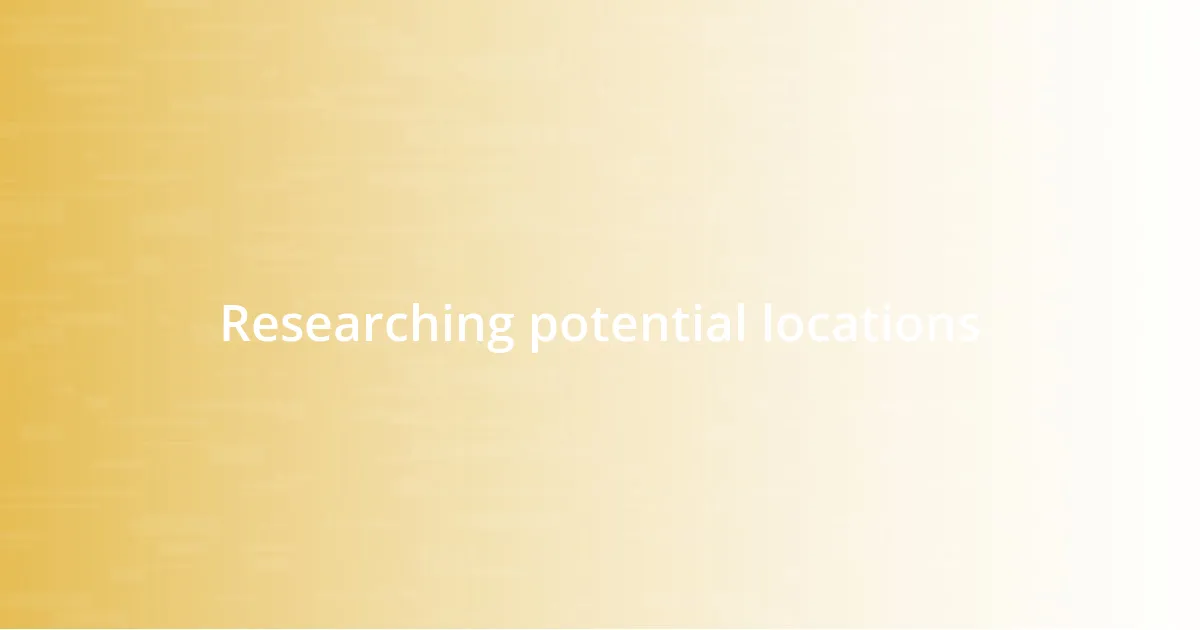
Researching potential locations
When I dive into researching potential scouting locations, it becomes a fascinating blend of exploration and analysis. I once spent hours online combing through maps and reviews, seeking hidden gems that would spark my creativity. Every click felt like a step towards unveiling a new adventure, and I enjoyed reading other scouts’ experiences that added depth to my understanding of each site.
Tips for Researching Potential Locations:
- Local Guidelines: Always check local regulations and permits required for your intended activity.
- Online Resources: Utilize platforms like Google Earth and Yelp for geographical insights and firsthand reviews.
- Community Insights: Engage with local scouting groups or forums to gain unique perspectives and recommendations.
- Weather Conditions: Research seasonal changes and climate patterns to ensure an optimal experience.
- Distance Considerations: Assess travel times and accessibility to determine the feasibility of reaching the location.
Each piece of information shapes my impressions and expectations. I recall one trip where a campsite looked idyllic in pictures but didn’t account for frequent flooding during the rainy season. Engaging with local documentaries or podcasts about the area can provide unexpected insights and help uncover its hidden challenges. This research phase transforms anticipation into a well-informed adventure, effectively blending safety with enthusiasm in my journey.
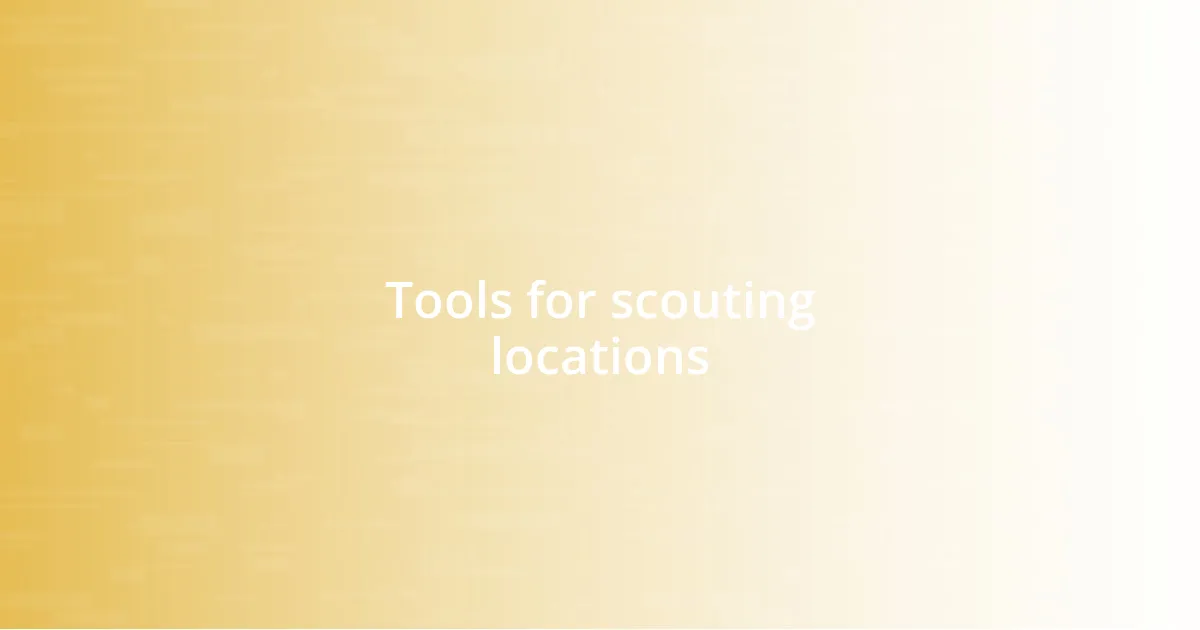
Tools for scouting locations
When it comes to tools for scouting locations, I find that a mix of digital and traditional methods works best. For example, I always grab my camera or smartphone, because capturing visuals on-site helps me remember that explosive moment when inspiration strikes. Just the other week, while scouting a coastal area, snapping a few quick shots allowed me to visualize potential compositions later. It’s like having a scrapbook of ideas right at my fingertips.
Beyond the basics, I rely heavily on mobile apps like AllTrails or Komoot. These tools help not only with finding trails but also with understanding the landscape layout in real-time. I remember using AllTrails during a hiking expedition in the mountains. It led me through a lesser-known trail that shared stunning views, blissfully away from the crowds. Isn’t it amazing how technology can open up a world of hidden treasures?
Lastly, never underestimate the power of a good, old-fashioned notebook. I jot down my thoughts, sketches, or even potential ideas as I explore different locations. The tactile experience of writing helps solidify those creative sparks in my mind. Recently, I spent a day by a rustic riverside, doodling what I envisioned for an upcoming project. I looked around and felt that adrenaline surge; there’s something special about physically interacting with a location that makes preparation feel genuine and deeply rewarding. What tools help you tap into that creative flow?
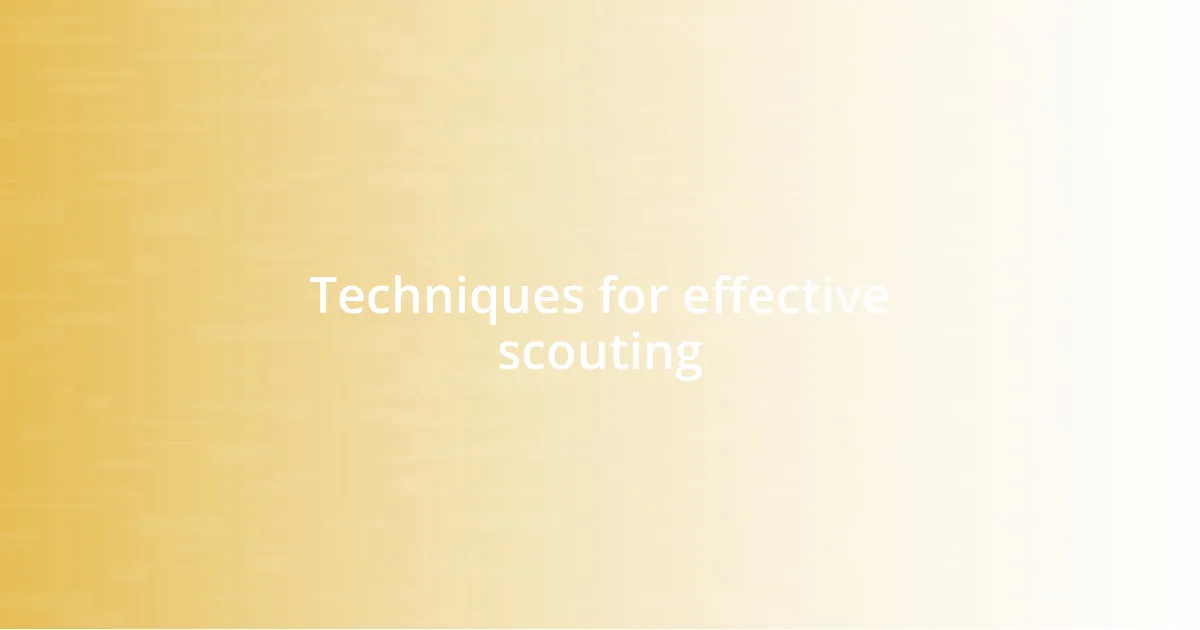
Techniques for effective scouting
Scouting locations effectively requires a strategic approach, blending intuition and preparation. One technique I’ve found invaluable is creating a detailed checklist tailored to the specific site. For instance, during a recent scouting trip to a historical ruin, I noted not just the visual aspects but also soundscapes and even the feeling of the wind there. How does a whispering breeze enhance the mood of a photograph? It’s those sensory details that elevate my final work, and having a structured method ensures I capture all of them.
When I head out, I make it a point to use my senses fully. I once visited an overgrown forest, and while the visuals were stunning, the ambiance—the rustle of leaves and distant bird calls—brought the space to life for my project. I’ve learned that if I take a moment to simply breathe and absorb the environment, the creative ideas seem to bubble up naturally. Isn’t it fascinating how disconnecting from your tech for just a few minutes can spark this fresh perspective?
Adapting to the location is another key technique. I recall a beach scouting session where the sunset altered everything; I switched from wide angles to capturing silhouettes to make the most of the lighting changes. By being flexible, I not only document varied perspectives but also feel more connected to my environment. This adaptability keeps my creativity alive, allowing me to seize spontaneous moments that can truly define a project. What experiences have you had where embracing spontaneity led to unexpected results?
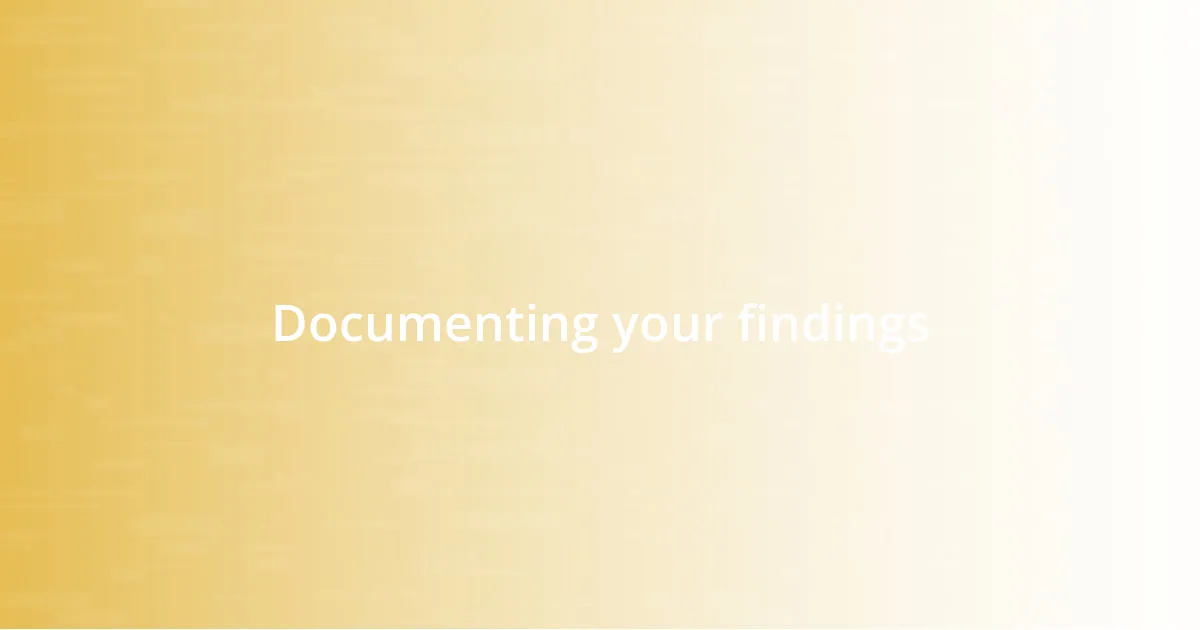
Documenting your findings
When documenting my findings, I often rely on a structured approach combined with a dose of spontaneity. For example, after a long day of scouting a dense forest, I took a moment to sit on a fallen log and jot down everything I observed, from the way the sunlight filtered through the leaves to the scents of damp earth and pine. I felt a wave of inspiration wash over me as I connected with the location—it was almost like the forest was sharing its secrets. What locations have made you pause and truly absorb their beauty?
I also find that integrating sketches into my documentation process enhances my creative flow. During a recent trip to a scenic overlook, I sketched a rough outline of the landscape while the view was fresh in my mind. It allowed me to visualize the elements I wanted to capture later. There’s something about translating what you see onto paper that deepens the connection to the scene while also solidifying the ideas swirling in my head. Have you ever tried doodling or sketching as a way to document your experiences?
To complement my notes and sketches, I prioritize organizing my findings digitally. After a passionate day of exploring, I upload my images and thoughts to a cloud-based app. I remember an outing where I captured countless shots of a cityscape, and revisiting those images later helped me identify the best lighting and angles for my project. This practice not only streamlines my workflow but also serves as a digital archive of inspiration. How do you keep track of your creative moments to ensure they’re not lost in the flurry of daily life?
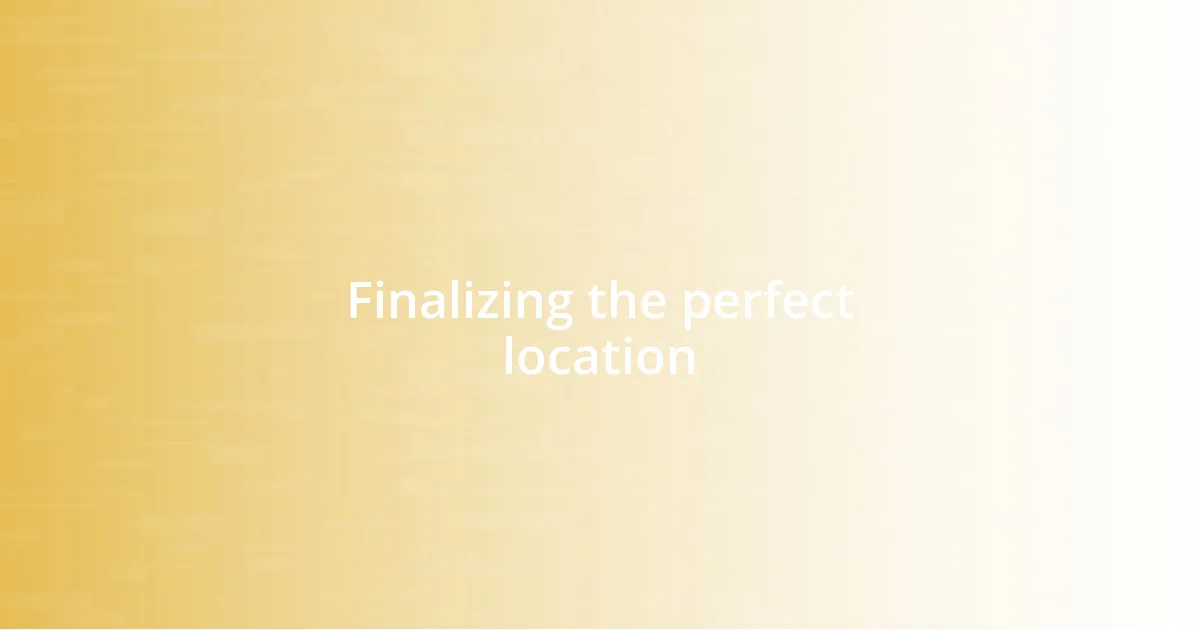
Finalizing the perfect location
Choosing the perfect location can feel like a puzzle where each piece plays a crucial role. I remember a weekend spent scouting a vibrant marketplace—initially, it seemed chaotic and overwhelming. But as I wandered and tuned into the laughter and enticing aromas, I realized this sensory overload was exactly what I needed for my project. How often do we overlook the beauty hidden within the hustle and bustle?
In my experience, narrowing down a location often requires a blend of instinct and flexibility. Recently, I found myself at a serene lakeside just as the early morning mist began to lift. The spot felt magical, and I instinctively set my camera to capture that ethereal moment. I’ve learned that sometimes, it’s essential to trust those gut feelings, as they can lead to stunning discoveries that might not clearly fit into our original vision. Have you ever discovered a place that completely changed your perspective on a project?
Finalizing a location truly comes alive when you reflect on how it resonates with your overall concept. I once spent hours pacing back and forth at an art installation, envisioning how each angle would narrate a different story. It was in that contemplation where I understood the deeper connection I had with the space. Isn’t it exhilarating when you realize that the right environment can transform your narrative into something truly captivating?
